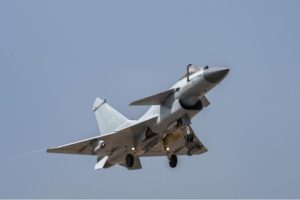China’s PLA Increasing Use of Simulators and Simulations
By Kevin McCauley
“In order to build a real training scene to the greatest extent, the brigade makes comprehensive use of photoelectric, information, audio, virtual reality and other technologies to simulate the actual feeling of equipment operation, set up a variety of combat environments and complex special situations, ensure that officers and soldiers of different specialties can be effectively tempered in a near real operating environment, and promote the rapid generation of combat effectiveness. At the same time, the simulation training platform can flexibly set the training difficulty, and automatically store the operation process, time, and other training data to further improve the training quality and efficiency. It is understood that relying on the simulation training platform, many new soldiers of the brigade have obtained work qualification certificates, and the talent training cycle has been significantly shortened.”
Several recent articles published in the People’s Liberation Army Daily highlight the increased use of training simulators and simulations to improve unit training, lower training costs, reduce wear on equipment during field training, and enhance unit combat capabilities. A combined brigade of the 74th Group Army in the Southern Theater Command employs simulator platforms for driver and firepower training. The armor simulator provides training for desert, jungle, snow, and other complex environments encountered in the Southern Theater. The first article claims that using simulators accelerates the training cycle for crew members compared to field training, providing practical experience and training qualification certificates. Simulator platforms include multi-function, networked training systems for armor, artillery and other combat disciplines. The article also indicates that the increased use of simulators provides both quality training and an efficient means to rapidly generate combat power within units.
The second People’s Liberation Army Daily article illustrates how the Southern Theater Navy uses simulations to boost the combat capability of its destroyer detachments. The destroyer formation found that use of training simulations was an efficient means to supplement actual combat training. Units can execute various operational scenarios and missions including logistics functions. The third??? excerpted article from People’s Liberation Army Daily examines standardization of military medical simulation platforms for medical support at the brigade and battalion level. The combat medical system is a pilot project by the Logistic Support Department of the Central Military Commission. The article states that the system consists of multiple pieces of equipment simulating various injuries, wound treatment, and wartime rescue. The brigade-level system provides medical training for advanced first aid and some emergency treatment. The battalion-level system provides medical training for basic treatment of battlefield casualties.
Sources:
“第74集团军某旅: 模拟训练平台加快人才成长(A brigade of the 74th Group Army: Simulation training platform accelerates talent growth),” People’s Liberation Army Daily (official news outlet of the PLA), 4 April 2022. http://www.81.cn/jfjbmap/content/2022-04/04/content_312941.htm
The leader of the brigade said that the traditional training model has a long training cycle and slow accumulation of practical experience. It takes a long time to train a qualified combatant. In order to effectively solve this problem, they actively innovated training methods, and introduced simulation training platforms in accordance with the idea of ”multi-functional training systems, networked training platforms, and practical training standards”, covering armor, artillery and other major combat disciplines, officers and soldiers. You can complete a variety of equipment operation training in the virtual environment, and quickly master the basic skills of professional operation.
Source: “南部战区海军某驱逐舰支队模拟训练助推实战能力提升(Simulation training of a Southern Theater Navy destroyer detachment enhances actual combat capability),” People’s Liberation Army Daily (official news outlet of the PLA), 11 April 2022. http://www.mod.gov.cn/power/2022-04/11/content_4908646.htm
“The combination of overseas training and indoor simulation training has effectively improved the technical and tactical level of officers and soldiers,” said the leader of the detachment. Not long ago, they conducted a maritime confrontation exercise. When encountering “enemy” ships, the officers and soldiers seized the opportunity to occupy a favorable position and carried out fire strikes, successfully reversing the passive situation.”
Source: “全军规范旅营卫勤战救模拟训练器材配备标准 (All army standardization of combat rescue simulation training equipment for brigade and battalion medical service),” People’s Liberation Army Daily (official news outlet of the PLA), 10 April 2022. http://www.81.cn/jfjbmap/content/2022-04/10/content_313260.htm
The battlefield medical aid simulation training equipment is mainly used to simulate common injuries in wartime and provide relatively realistic training conditions for military personnel, which is of significance for the generation of wartime rescue capabilities….
The standards include11 types of simulation training equipment for the battlefield medical aid in 6 categories, basically covering the primary first aid, advanced first aid, and some early treatment requirements as specified in the provisions on medical aid in wartime.
Among others, the military medical aid training platform at battalion level, equipped with two types of simulation training equipment for CPR and field first-aid, mainly functions to provide training for self-rescue and mutual medical aid skills for service members, including ventilation, hemostasis, bandaging, fixing, transferring, CPR, respiratory tract opening and respiratory maintenance.
The military medical aid training platform at brigade level mainly serves for advanced first aid and some emergency treatment simulation training targeting medical professionals. It is equipped with 6 types of simulation training equipment for CPR, advanced airway management, puncture training, and so on.
Distribution A: Approved for public release
Categories:
Tags:
Related Products
Chinese Military Exercises Highlight Improvements in Joint Operations






